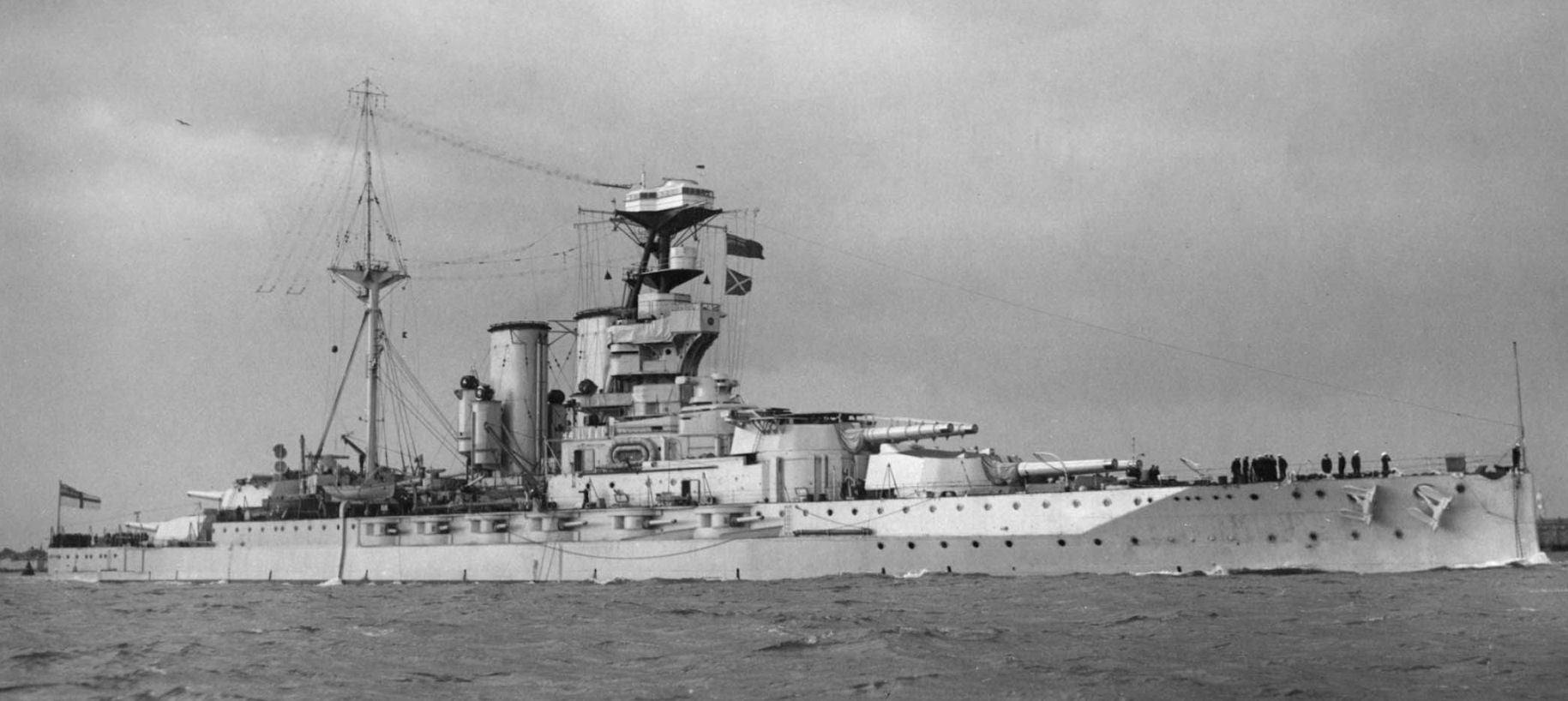HMS Malaya
First World War
A Queen Elizabeth class battleship, HMS Malaya was built by Sir W. G. Armstrong Whitworth and Company at High Walker, Newcastle upon Tyne, and launched in March 1915. She was named in honour of the Federated Malay States in British Malaya, whose government paid for her construction. She took part in the Battle of Jutland, on 31 May 1916, where she was hit eight times and took major damage and heavy crew casualties. A total of 65 men died, in the battle or later of their injuries. Uniquely among the ships at the battle, HMS Malaya flew the red-white-black-yellow ensign of the Federated Malay States.
Unlike her sisters Queen Elizabeth, Warspite and Valiant, Malaya did not undergo a comprehensive reconstruction between the wars.
Second World War
HMS Malaya served in the Mediterranean in 1940, escorting convoys and operating against the Italian fleet. She shelled Genoa in February 1941 as part of Operation Grog but due to a crew error, fired a 15-inch armour-piercing shell into the south-east corner of the Cathedral nave. The fuse failed to detonate.
On 7 March 1941, while escorting convoy SL 67, Malaya encountered the German capital ships Scharnhorst and Gneisenau that were conducting the Operation Berlin raid which targeted Allied convoys. By her presence she forced them to withdraw rather than risk damage in an attack.
Later that month Malaya was escorting convoy SL 68. On the evening of 20 March 1941, about 250 miles west-northwest of the Cape Verde Islands, Malaya was hit by a torpedo from U-106. Damaged on the port side, and with a 7 degree list due to flooding, Malaya was forced to leave the convoy and make for port, escorted by the corvette Crocus. She reached Trinidad safely on 29 March. After temporary repairs were made, she continued to the New York Navy Yard, where she was docked for four months.
Once repairs were completed on 9 July, she escorted convoys from the United Kingdom to Malta and Cape Town until summer 1943.
Malaya was placed in reserve at the end of 1943. During this time her entire secondary 6-inch armament was offloaded and her anti-aircraft armament was enhanced. Between 15 and 17 May 1944, Malaya was used in Loch Striven as a target ship for inert Highball bouncing bomb prototypes, one of which punched a hole in the ship’s side. She was reactivated just before the Normandy landings to act as a reserve bombardment battleship.
HMS Malaya was finally withdrawn from all service at the end of 1944 and became an accommodation ship for a torpedo school. Sold on 20 February 1948 to Metal Industries, Limited she arrived at Faslane on 12 April 1948 for scrapping.
Pre-Refit












Post Refit

























External Detail



Internal Detail


Aircraft of HMS Malaya
Sopwith 1 1/2 Strutter


Fairey Swordfish


